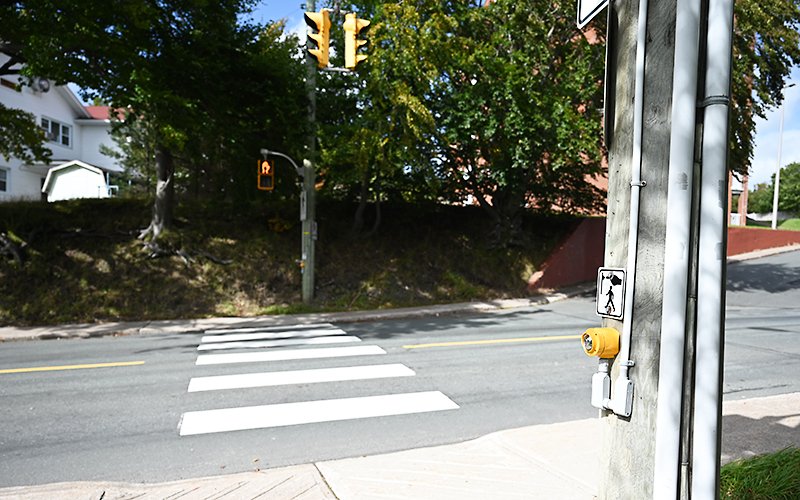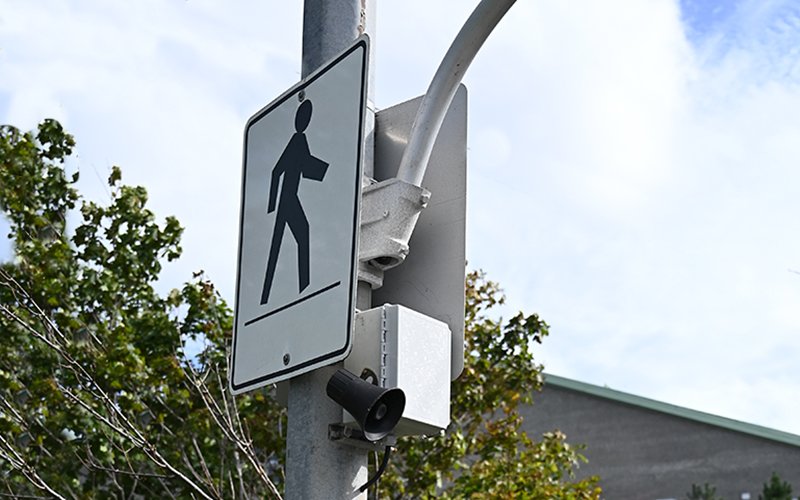Search
Traffic signals are valuable devices for improving safety. They are also important for controlling the flow of traffic.
As traffic volumes increase beyond the capacity of stop and/or yield signs at congested intersections, traffic signals are often used to assign the right-of-way.
Signals offer maximum control at intersections. They inform people driving, cycling and walking of what to do and what not to do, permitting the orderly movement of traffic.
A team of qualified City staff design and install traffic signals. A qualified contractor performs ongoing maintenance.
Concerns and questions
If you have concerns about intersections that are or are not signalized, tell us by contacting Access St. John's. When we get a request, our qualified staff will investigate and study the problem.
Not always the right solution
Traffic signals are not the right solution for every traffic problem. For example, although traffic signals can reduce the number of broadside collisions at an intersection, they can also increase the number of rear-end collisions. Unjustified signals can also cause unnecessary delays or divert traffic onto residential streets.
Detectors
Have you ever wondered how a traffic light “knows” you are there?
Many City traffic lights are on a timer, meaning there is a specific period of ‘green' time, regardless of traffic conditions. But some signals in the city are traffic responsive. This means the light operates using a combination of detectors and timers.
Detectors can tell different things. They know:
- when a car arrives at an intersection
- when too many cars are stacked up at an intersection
- when cars have entered a turn lane
This explains why it seems you wait longer for a green light at times. It also explains why you may not get a flashing green arrow every time you arrive at a particular intersection.
So, where are these detectors? In St. John's, we install detectors beneath the asphalt.
The signal controller is the ‘brain' of a signal system. It controls the selection and timing of traffic movements. The controller at one intersection can also communicate with controllers at other intersections. This means we can coordinate signals on a timed cycle during peak hours.
Inductive loop
The most common detector is the inductive loop. An inductive loop is a coil of wire embedded in the road's surface (beneath or with a groove cut in pavement) that acts somewhat like a magnet. When a car drives over or stops on the loop, metal in the car changes the magnetic field. The wires detect the change and tell the traffic controller that a car is present.
Accessible Pedestrian Signals
To improve accessibility for people with vision loss, traditional traffic signals can be equipped with additional features known as Accessible Pedestrian Signals (APS). Typically, APS provide audible and vibrotactile indications that act as the walk signal for people with vision loss. The APS walk sound is activated once a pedestrian presses a push button and holds it for three seconds installed as part of the pedestrian signal.
Did you know?
- There are APS installed at more than 20 intersections dispersed across the city. The city is installing APS at new locations to improve accessibility.
- In addition to regular press and hold actuation, Key2Access includes use of mobile apps or fobs programmed to activate crossing signals without having to press a push button.
- Key2Access is used at nine intersections city wide.
-
All APS in the city needs to be activated by pedestrians.
Key2Access
Key2Access is a new technology that eliminates the need to reach a button to get a pedestrian crossing signal at an intersection. With a fob or the free mobile app, users can activate a pedestrian signal and get an audible signal for those living with sight loss.
The wireless system can also tell the user the street names to improve their ability to identify a crossing at an intersection and navigate a crosswalk safely. There are also buttons at these locations for those without fobs.
Get Key2Access
You can download the free Key2Access app on your mobile device in your app store.
The CNIB has collaborated with St. John's and other municipalities to pilot this new technology. If you need help with Key2Access, email inclusion@stjohns.ca or call us at 709-576-2574.
Places with Key2Access
- Kenna's Hill and Boulevard intersection
- Westerland Road and Prince Philip Drive intersection
- Cowan Avenue and Topsail Road intersection
- The Boulevard crosswalk, near CNIB Entrance
- King's Bridge Road and Winter Avenue crosswalk
- Elizabeth Avenue and Newtown Road crosswalk
- Elizabeth Avenue and Freshwater Road crosswalk
Contact Us







